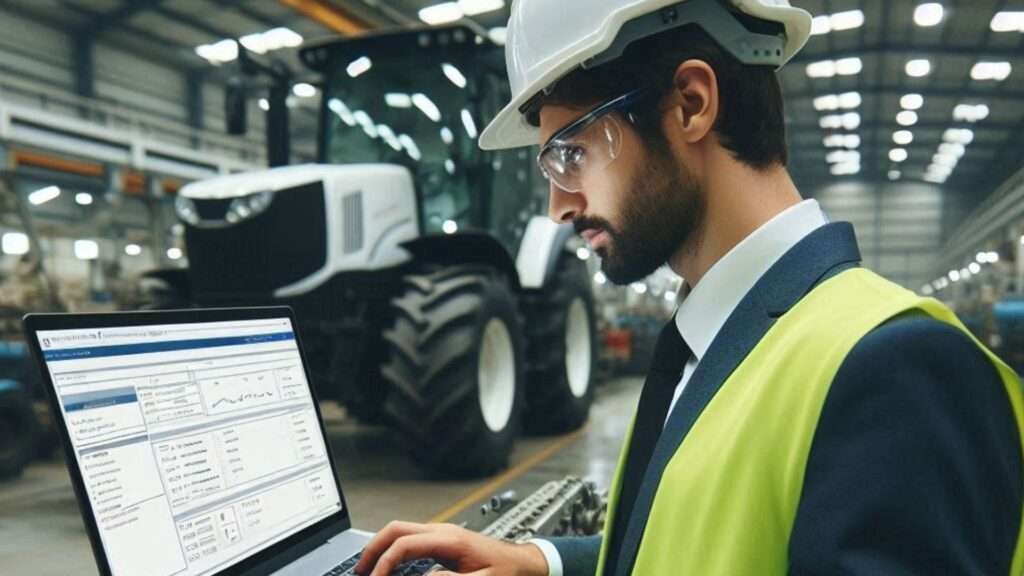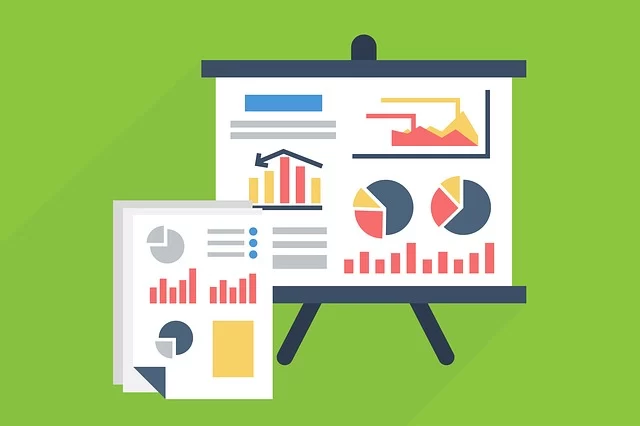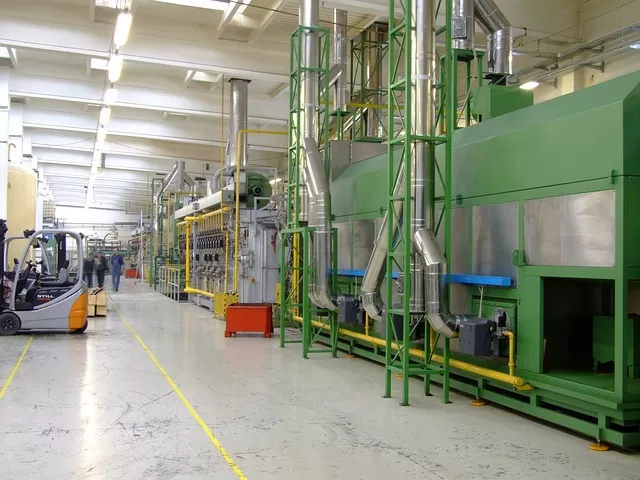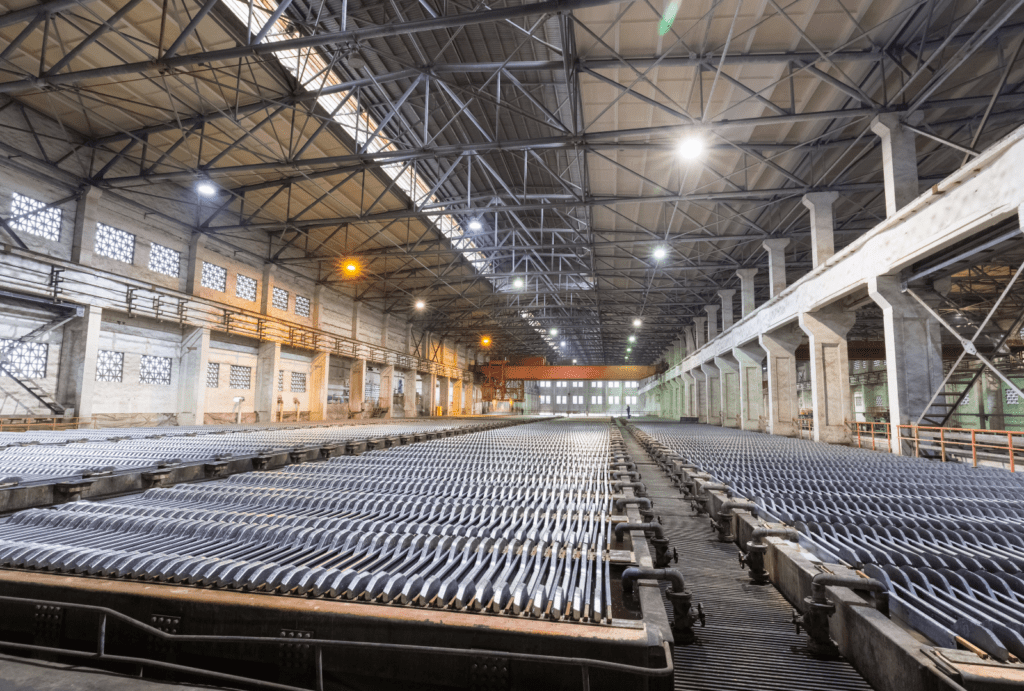Thorough Research While Selecting the Right CMMS for Your Business.
Investing in a Computerised Maintenance Management System (CMMS) is a critical business decision.
A CMMS can significantly improve operational efficiency, streamline maintenance processes, and reduce downtime, resulting in cost savings and higher productivity.
However, the benefits of a CMMS are contingent on selecting the appropriate system that meets your organization’s specific needs and operational goals.
Before purchasing a CMMS, conduct extensive research to ensure that the chosen solution is cost-effective, user-friendly, and capable of meeting both current and future requirements.
A well-informed decision necessitates an extensive and thorough selection process in which each potential CMMS is assessed based on its features, scalability, compatibility with existing systems, and vendor support.
The selection process should start with a thorough analysis of your company’s maintenance management requirements.
This includes identifying the unique challenges your company faces, the specific functionalities needed, and the desired outcomes of implementing a CMMS.
It is also critical to consider the user experience, as an intuitive and simple-to-use system can greatly improve user adoption and efficiency.
It is critical to consider the total cost of ownership, which includes both the initial purchase price and ongoing costs such as maintenance, training, and upgrades.
A low-cost CMMS should provide a good return on investment by consistently improving performance and reducing operational costs over time.
Another important consideration is to future-proof your investment. The ideal CMMS should be adaptable to changing technological advancements and scalable to support your company’s growth.
It should also provide strong data security features to protect sensitive information and ensure compliance with industry regulations.
Finally, the goal is to make an informed decision that supports your business objectives while maximising the benefits of a CMMS.
Prioritising thorough research and a systematic selection process will ensure that the CMMS you select is a valuable asset to your organisation.
Update And Map Business Processes Prior To Researching For A CMMS.
Updating and mapping business processes before selecting a CMMS is a wise move and below is a breakdown of why this approach is beneficial:
1. Business Process Mapping:
a. Provides a clear picture of current operations.
b. Identifies inefficiencies and bottlenecks.
c. Helps in standardizing processes across the organization.
2. Senior Management Sign-off:
a. Ensures alignment with strategic goals.
b. Secures buy-in from top leadership.
c. Facilitates change management.
3. Using Business Process Mapping Software:
a. Offers visual representation of processes.
b. Enables easy updates and revisions.
c. Facilitates better communication across teams.
4. Updating Overarching Business Framework Policies:
a. Ensures consistency with mapped processes.
b. Aligns policies with current business needs and goals.
c. Provides a solid foundation for CMMS requirements.
5. Defining CMMS Needs:
a. Allows for more accurate specification of requirements.
b. Ensures the CMMS will support optimized processes.
c. Helps avoid selecting a CMMS that doesn’t fit the business model.
By following this approach, you’re essentially creating a roadmap of your organization’s operations and needs and this will position your company much better to discuss and define the particular requirements from a CMMS.
1. This method also has additional benefits:
2. It can reveal areas where a CMMS could add the most value.
3. It might uncover process improvements that can be made independently of the CMMS.
4. It provides a baseline against which to measure the impact of the CMMS after implementation.
The business process mapping software market offers a variety of tools, each with its own strengths.
Below are 3 products that are quite good and very popular in my opinion:
1. Lucidchart: Known for its user-friendly interface and extensive template library. Offers real-time collaboration features. Integrates well with other business tools.
2. Microsoft Visio: Part of the Microsoft Office suite, offering seamless integration with other Microsoft products. Provides a wide range of diagram types and templates. Offers both cloud-based and desktop versions.
3. IBM Blueworks Live: Specializes in business process modeling and analysis. Offers strong collaboration features. Provides automatic documentation generation.
Each of these tools has distinct strengths and may or may not be appropriate for your specific needs, so researching this software for relevance, collaboration features, integration capabilities, performance, budget and usability is advised.
Live Demonstrations: Seeing the Software in Action.
Requesting live demos from potential CMMS vendors is an important step in the selection process.
These live demos offer businesses an invaluable opportunity to see the software’s features and functionalities in real time.
Observing the CMMS in action allows stakeholders to gain a thorough understanding of the user interface and overall user experience.
This hands-on experience is helpful in determining whether the software meets the business’s specific operational needs.
During a live demonstration, it is critical to note how intuitive and user-friendly the CMMS appears.
A complex or cumbersome interface can impede user adoption and, as a result, reduce the productivity gains expected from the system.
Pay close attention to the workflow processes demonstrated, as they should reflect the specific needs of your organisation.
It is also useful to see how easily the software integrates with existing systems and handles data migration, as these are common implementation challenges.
The key is to encourage active participation during the demo. To gain a better understanding of the software’s capabilities, businesses should ask specific questions.
Questions may include how the CMMS handles preventative maintenance schedules, tracks and manages spare parts inventory, and generates and customises reports.
Requesting demonstrations of key features relevant to your workflows can provide insight into how well the software will support your day-to-day activities.
Live demonstrations provide an opportunity to evaluate the vendor’s support and training services.
Observe how the vendor handles questions and concerns during the demo, as this interaction may indicate the level of support you can expect after implementation.
Enquire about the availability of training materials and user manuals, which are essential for a smooth transition to the new system.
Live demonstrations are an important part of the process of selecting the right CMMS. They provide a real-world perspective on the software’s functionality, user interface, and overall suitability for your business processes.
By actively participating and asking pertinent questions, you can make an informed decision that will benefit your maintenance management operations.
Contacting Current Users: Gaining Firsthand Insights.
When choosing a Computerised Maintenance Management System (CMMS) for your company, one of the most effective strategies is to contact current software users.
Engaging with businesses that already use the CMMS solutions you’re considering can provide invaluable firsthand knowledge about various aspects of the software.
This direct feedback can provide a realistic picture of the software’s performance, dependability, usability, and customer service.
Firsthand feedback from existing users can help you evaluate the CMMS software’s performance in real-world scenarios.
Users can discuss the software’s effectiveness in managing maintenance tasks, tracking assets, and scheduling preventive maintenance. This information is critical in determining whether the CMMS can meet the specific requirements of your business operations.
Another important factor to consider is reliability. Speaking with current users can help you determine how often the software experiences downtime or technical issues.
Understanding the frequency and severity of these issues can help you determine whether the CMMS is reliable enough to meet your business needs.
User-friendliness is also an important consideration in the selection process. Existing users can provide feedback on the software’s usability, the learning curve, and how intuitive the user interface is.
This information can help you decide whether your team will be able to quickly adapt to and effectively use the CMMS.
Customer service is frequently a critical component in the overall user experience. Enquire about the CMMS vendor’s support services, particularly their quality and responsiveness.
Current users can share their experiences with technical support, troubleshooting, and training resources, which can be critical for a successful implementation and ongoing use.
When contacting existing users, ask about their overall satisfaction with the CMMS. Enquire about any difficulties they’ve encountered and how well the software met their needs.
This comprehensive feedback can help you make an informed decision, ensuring that the CMMS you choose is compatible with your business objectives and operational requirements.
Aligning the CMMS with Industry and Operational Needs.
When selecting a Computerized Maintenance Management System (CMMS)/Asset Management Software (AMS) solution for your business, ensuring alignment with your specific industry and operational needs is paramount.
This involves a thorough evaluation of the CMMS’s features, functionalities, and customization options to guarantee they support your unique processes and workflows.
Each industry has distinct requirements, and the CMMS you choose must be capable of adapting to these nuances to optimize maintenance management.
Begin by identifying the core functionalities that are essential for your industry. For instance, a manufacturing business may prioritize asset management, preventive maintenance scheduling and downtime tracking, while a healthcare facility might need robust compliance tracking and equipment calibration features.
Understanding these priorities will help you shortlist CMMS solutions that offer the necessary tools tailored to your operational needs.
Customization is another critical factor. The CMMS should be flexible enough to accommodate your specific workflows and processes.
Look for software that allows you to configure Maintenance Analysis Dashboards, reports, and notification settings according to your preferences. Customizable fields and forms can also facilitate better data entry and retrieval, ensuring the system works seamlessly with your existing operations.
Furthermore, industry-specific regulations and standards must be considered. Check that the CMMS can facilitate compliance with these requirements.
Pharmaceuticals, food and beverage, and aerospace industries, for example, have strict regulatory requirements that the CMMS must meet.
Check to see if the software includes features such as audit trails, compliance management, and documentation capabilities to effectively meet regulatory requirements.
Evaluating the compatibility of the CMMS with your industry and operational needs will ensure that you invest in a solution that not only enhances maintenance efficiency but also supports regulatory compliance and operational excellence.
By aligning the system with your specific requirements, you can achieve a smoother implementation and greater long-term benefits.
Understanding The Value: Evaluating Total Cost of Ownership.
When selecting a Computerized Maintenance Management System (CMMS) for your business, it is imperative to evaluate the total cost of ownership (TCO). This comprehensive financial analysis encompasses not only the initial purchase price but also the multitude of associated expenses that accrue over the system’s lifecycle.
Understanding these costs enables businesses to make informed decisions that are consistent with their budgetary constraints and long-term goals.
The total cost of ownership starts with the initial implementation costs. These include the software licence, hardware specifications, and any customisations required to tailor the system to your specific operational requirements.
Implementation costs can vary greatly between vendors, so it is critical to get detailed quotes and understand what is included in the base price.
Training is another crucial component of TCO. Effective utilization of a CMMS requires that your team be adequately trained.
Training costs may be a one-time expense or require periodic refresher courses, depending on the complexity of the system and staff turnover rates. It will be beneficial to inquire whether the vendor provides comprehensive training programs before implementation, during and after and if these are included in the initial cost or billed separately.
Ongoing support and maintenance are vital to ensure the CMMS operates efficiently. These costs typically cover technical support, software updates, and troubleshooting services.
Support packages can vary, with some vendors offering tiered support levels at different price points. Assessing the quality and availability of support services is crucial, as poor support can lead to operational downtime and increased costs.
Potential future upgrades should also be factored into the TCO. As your business grows and evolves, your CMMS will need to adapt to new requirements and technological advancements. Understanding the vendor’s upgrade policy, associated costs, and the frequency of updates can help you anticipate future expenses and ensure that the system remains relevant.
To make a well-rounded decision, compare the TCO across various CMMS vendors. Assess the value offered in terms of features, capabilities, and the vendor’s reputation for reliability and customer service.
A comprehensive evaluation of the total cost of ownership will guide you in selecting a CMMS that not only fits your budget but also delivers long-term value to your business.
User-Friendliness and Training Requirements.
When selecting the best Computerised Maintenance Management System (CMMS) for your company, the interface’s usability is critical.
A CMMS with an intuitive design allows your team to easily navigate the system, which can significantly increase adoption rates and operational efficiency.
A user-friendly CMMS reduces the learning curve for employees, allowing them to become proficient with the system quickly. This, in turn, reduces the time and resources needed for training, resulting in cost savings and increased productivity.
It’s essential to evaluate the availability of training resources provided by the CMMS vendor. Comprehensive training materials, such as user manuals, video tutorials, and interactive guides, can facilitate the onboarding process.
Additionally, the provision of ongoing training sessions and webinars can help keep your team updated on new features and functionalities, ensuring they can leverage the system to its full potential.
Support materials are equally important. Access to a robust knowledge base and responsive customer support can aid in resolving any issues that may arise, thereby minimizing downtime and maintaining the smooth operation of your maintenance processes.
Moreover, evaluating the vendor’s approach to onboarding new users can provide insights into their commitment to customer success.
A vendor that offers personalized onboarding sessions and dedicated support teams demonstrates a proactive approach to ensuring that your staff is well-equipped to use the CMMS effectively.
Ultimately, selecting a CMMS with a user-friendly interface and comprehensive training resources can lead to higher adoption rates among your staff, streamlined operations, and improved maintenance management.
By carefully assessing these aspects, you can choose a CMMS that not only meets your technical requirements but also aligns with your team’s capabilities and operational goals.
Can The CMMS Grow With Your Business? Scalability and Future-Proofing.
When selecting a Computerized Maintenance Management System (CMMS) for your business, scalability and future-proofing are crucial factors to consider. As companies grow and evolve, their operational needs and maintenance requirements change. Therefore, it is essential to choose a CMMS that can seamlessly scale and adapt to these changes.
A scalable CMMS should be able to handle increased data volumes without compromising performance. This includes the ability to store and process large datasets generated from various equipment, machinery, and maintenance activities.
As your business expands, the system should efficiently manage the influx of data and provide quick, reliable access to historical records and analytics.
Another critical aspect of scalability is the system’s capability to accommodate additional users.
As your workforce grows, the CMMS should support an increasing number of concurrent users without degradation in performance.
Multi-user access and role-based permissions are essential features that ensure the system remains functional and secure even as more employees interact with it.
Expanded functionalities are also a key consideration. A future-proof CMMS should offer modular features or customizable options that allow you to add new functionalities as your maintenance processes become more complex.
This might include advanced reporting tools, integration with other enterprise systems, or specialized modules for specific industry requirements.
Understanding the vendor’s roadmap for future developments is equally important. Assess the vendor’s commitment to incorporating emerging and constantly evolving technology such as artificial intelligence (AI).
AI can significantly enhance predictive maintenance capabilities, optimize asset management, and improve decision-making processes.
The incorporation of AI is probably something that should not be overlooked as there’s little doubt in my mind that AI Can Make Asset Management Better.
A forward-thinking vendor will continuously innovate and update their software to leverage these advancements.
Selecting a CMMS that is both scalable and future-proof ensures that your business can efficiently manage its maintenance operations today and adapt to future challenges.
By evaluating the software’s ability to handle increased data, support additional users, and expand functionalities, along with the vendor’s vision for technological advancements, you can make a well-informed decision that supports long-term growth and sustainability.
Comprehensive Evaluation: Answering Key Questions.
When choosing the best Computerised Maintenance Management System (CMMS) for your company, you must conduct a thorough evaluation that includes answering as many important questions as possible.
These enquiries help to ensure that the CMMS you choose meets your industry’s requirements and can effectively support your operations.
Firstly, assess whether the CMMS aligns with your industry needs. This includes checking if it supports the specific types of equipment and maintenance activities pertinent to your sector.
It’s also vital to calculate the total cost of ownership, considering not just the initial purchase price but also long-term costs such as maintenance, updates, and training.
User-friendliness is another critical factor. A CMMS should have an intuitive interface that minimizes the learning curve for your team.
Customization options are also important, allowing the system to be tailored to your specific workflows and reporting requirements.
Scalability is essential for growing businesses. Ensure the CMMS can scale with your operations, whether you’re expanding to new sites or increasing your asset base.
Mobile capabilities are increasingly important, enabling maintenance staff to access the system and update records in real-time from anywhere.
Robust reporting features are a must-have, offering insights into maintenance activities, asset performance, and compliance status.
Integration capabilities with other company systems, such as operating system software such as Citec or Yokagawa DCS is a very important question to ask, this can streamline your operations and improve data accuracy.
Cyber Security Measures are paramount to protect sensitive data. Verify that the CMMS offers strong security protocols and data encryption.
The vendor’s track record is also a significant consideration; look for providers with a history of reliable performance and positive customer feedback.
Customer support can make or break your CMMS experience. Ensure the vendor provides comprehensive support services, including training, troubleshooting, and regular updates.
If your business operates across multiple sites, the CMMS should support multi-site operations, facilitating centralized management and reporting.
Effective asset management and maintenance scheduling are core functions of any CMMS. Evaluate how well the system tracks asset history, schedules preventive maintenance, and manages work orders.
Consider the vendor’s roadmap for future developments to ensure the CMMS will continue to evolve and meet your needs as technology advances.
By thoroughly investigating these areas, businesses can make a more informed decision about which CMMS is best suited for their needs, ultimately leading to enhanced operational efficiency and asset longevity.









Excellent breakdown on selecting the right CMMS! In addition to your insights, it’s worth exploring popular platforms like Fogwing CMMS, Limble, Fiix, and UpKeep—each offers unique features based on business size and industry needs. Smart research leads to smarter decisions.
Thanks Deepa, I appreciate your feedback